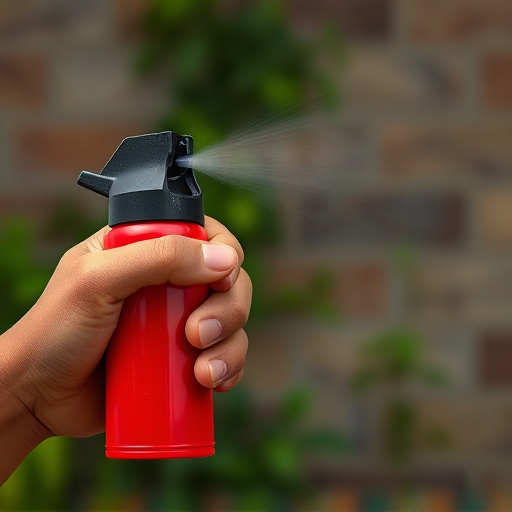Mastering best bear spray application techniques (BSAT) is crucial for safe outdoor adventures in bear country. Aim for face and eyes from 20-30 ft, use 'back-and-up' method, choose nozzle settings for environment, train to respond calmly, follow manufacturer instructions, and combine with other safety measures.
“Uncover the power of inflammatory agent personal protection spray, your ultimate line of defense against unexpected wildlife encounters. This comprehensive guide explores the essentials of bear spray, from understanding its composition to selecting the best fit for your outdoor adventures. Discover the art of effective application techniques, ensuring optimal protection during your next hike or campout. Learn essential safety precautions and avoid common mistakes to maximise the benefits of this powerful tool.”
- Understanding Inflammatory Agent Personal Protection Spray
- Choosing the Right Bear Spray for Your Needs
- Effective Application Techniques for Optimal Protection
- Safety Precautions and Common Mistakes to Avoid
Understanding Inflammatory Agent Personal Protection Spray
Inflammatory agent personal protection sprays, commonly known as bear spray, are designed to deter and protect against aggressive wildlife encounters, particularly from bears. Understanding how to use this powerful tool effectively is key to ensuring safety in outdoor settings where such animals roam. The best bear spray application techniques involve aiming for the face and eyes of the potential attacker, as these areas are sensitive and can quickly stop an assault.
Knowing the right distance to deploy the spray is also crucial. Typically, users should aim from a safe distance of 20-30 feet (6-9 meters), allowing the spray to cover the bear’s face while maintaining a safe barrier between you and the animal. Practicing proper application techniques through training and simulations can greatly enhance your ability to respond calmly and effectively during an actual encounter, ensuring your safety in the great outdoors.
Choosing the Right Bear Spray for Your Needs
When selecting a bear spray, understanding your specific needs is key. Different environments and potential encounters require varied features. For instance, if you’re hiking in dense forests, opt for a spray with finer nozzle settings for better control and accuracy at close ranges. In contrast, open terrain might demand a wider spray pattern for rapid coverage.
The best bear spray application techniques vary too. Experts suggest a ‘back-and-up’ approach: move away from the bear while spraying in its direction. This ensures you maintain distance and cover your escape route. Practice these techniques regularly to ensure effectiveness during an actual encounter, making your outdoor adventures safer and more enjoyable.
Effective Application Techniques for Optimal Protection
For optimal protection against inflammatory agents, understanding and employing the best bear spray application techniques is paramount. The key lies in ensuring thorough coverage while minimizing overspray. Aim for a fine mist, targeting areas like the face, eyes, and respiratory system—the primary attack points of bears. Practice makes perfect; training sessions or simulations can help individuals become proficient in accurate and swift deployment.
Remember, distance is crucial. Maintain at least 20-30 feet (6-9 meters) away from potential threats to give the spray time to take effect. Once activated, allow a few seconds for the canister to release its contents before moving closer for better protection. Proper application not only enhances your safety but also ensures the effectiveness of this valuable personal protection tool in unpredictable wildlife encounters.
Safety Precautions and Common Mistakes to Avoid
When using an inflammatory agent personal protection spray, such as bear spray, safety precautions are paramount. Always read and follow the manufacturer’s instructions carefully. Proper storage is key; keep your spray in a cool, dry place away from direct sunlight to maintain its effectiveness. Ensure you understand the trigger mechanism and test it regularly to avoid accidental discharge. Wear protective gear, including gloves, to minimize skin contact with the spray.
Common mistakes to avoid include misjudging the range of the spray, using it as a substitute for distance or speed in an encounter. Another frequent error is failing to follow up with other safety measures like making noise or backing away slowly after spraying. Remember, best bear spray application techniques involve aiming at the face and eyes, but use only when necessary. Never point it at anyone unless you intend to deploy it.
Inflammatory agent personal protection spray, such as bear spray, is a vital tool for anyone venturing into wild environments. By understanding the product, choosing the right fit, and mastering application techniques like the best bear spray use, you can enhance your safety and enjoyment outdoors. Remember to observe safety precautions and avoid common mistakes to ensure an effective and secure experience.
